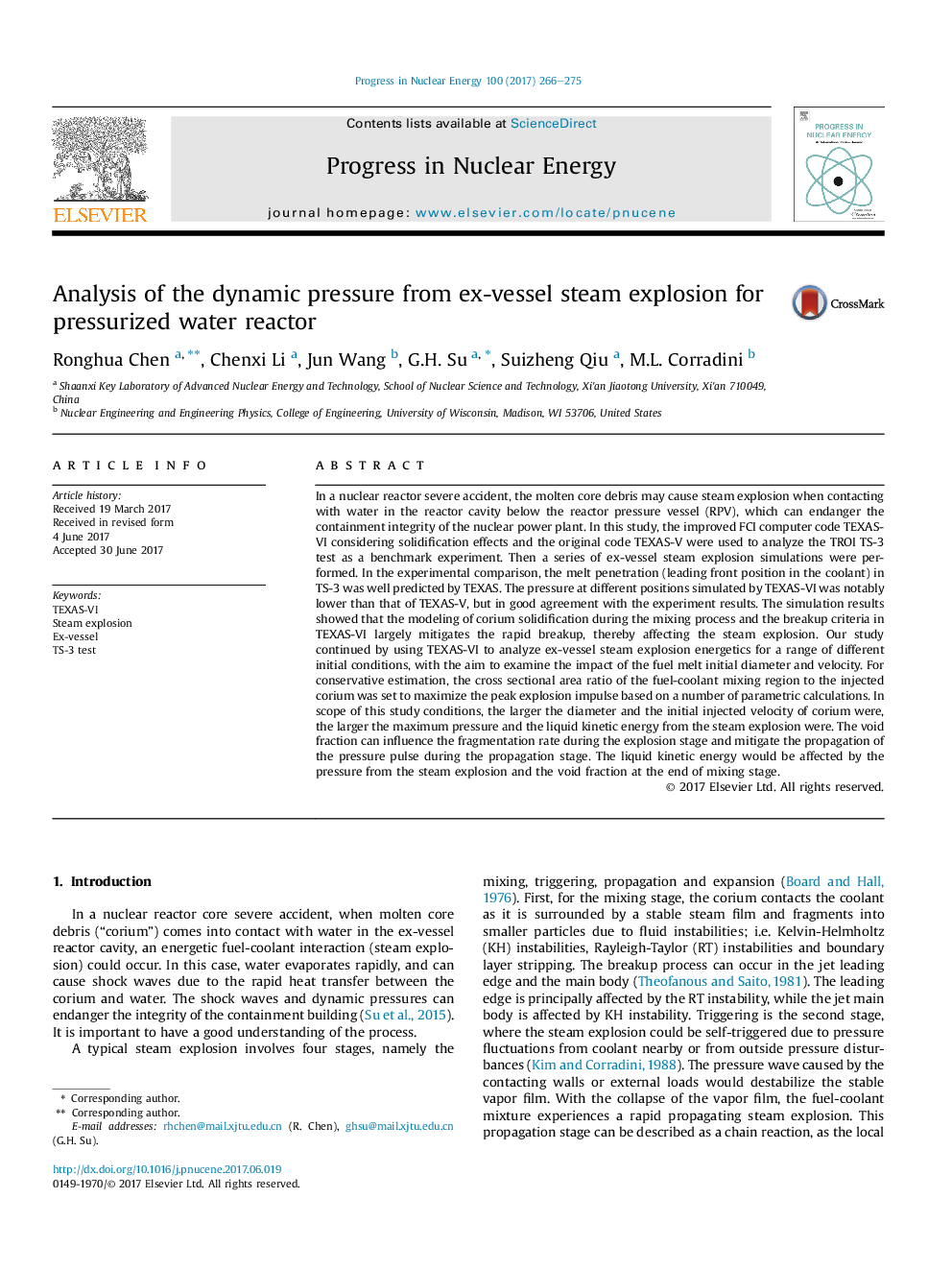| کد مقاله | کد نشریه | سال انتشار | مقاله انگلیسی | نسخه تمام متن |
|---|---|---|---|---|
| 5478184 | 1521738 | 2017 | 10 صفحه PDF | دانلود رایگان |
عنوان انگلیسی مقاله ISI
Analysis of the dynamic pressure from ex-vessel steam explosion for pressurized water reactor
ترجمه فارسی عنوان
تجزیه و تحلیل فشار پویا از انفجار بخار سابق برای راکتور آب تحت فشار
دانلود مقاله + سفارش ترجمه
دانلود مقاله ISI انگلیسی
رایگان برای ایرانیان
کلمات کلیدی
موضوعات مرتبط
مهندسی و علوم پایه
مهندسی انرژی
مهندسی انرژی و فناوری های برق
چکیده انگلیسی
In a nuclear reactor severe accident, the molten core debris may cause steam explosion when contacting with water in the reactor cavity below the reactor pressure vessel (RPV), which can endanger the containment integrity of the nuclear power plant. In this study, the improved FCI computer code TEXAS-VI considering solidification effects and the original code TEXAS-V were used to analyze the TROI TS-3 test as a benchmark experiment. Then a series of ex-vessel steam explosion simulations were performed. In the experimental comparison, the melt penetration (leading front position in the coolant) in TS-3 was well predicted by TEXAS. The pressure at different positions simulated by TEXAS-VI was notably lower than that of TEXAS-V, but in good agreement with the experiment results. The simulation results showed that the modeling of corium solidification during the mixing process and the breakup criteria in TEXAS-VI largely mitigates the rapid breakup, thereby affecting the steam explosion. Our study continued by using TEXAS-VI to analyze ex-vessel steam explosion energetics for a range of different initial conditions, with the aim to examine the impact of the fuel melt initial diameter and velocity. For conservative estimation, the cross sectional area ratio of the fuel-coolant mixing region to the injected corium was set to maximize the peak explosion impulse based on a number of parametric calculations. In scope of this study conditions, the larger the diameter and the initial injected velocity of corium were, the larger the maximum pressure and the liquid kinetic energy from the steam explosion were. The void fraction can influence the fragmentation rate during the explosion stage and mitigate the propagation of the pressure pulse during the propagation stage. The liquid kinetic energy would be affected by the pressure from the steam explosion and the void fraction at the end of mixing stage.
ناشر
Database: Elsevier - ScienceDirect (ساینس دایرکت)
Journal: Progress in Nuclear Energy - Volume 100, September 2017, Pages 266-275
Journal: Progress in Nuclear Energy - Volume 100, September 2017, Pages 266-275
نویسندگان
Ronghua Chen, Chenxi Li, Jun Wang, G.H. Su, Suizheng Qiu, M.L. Corradini,
